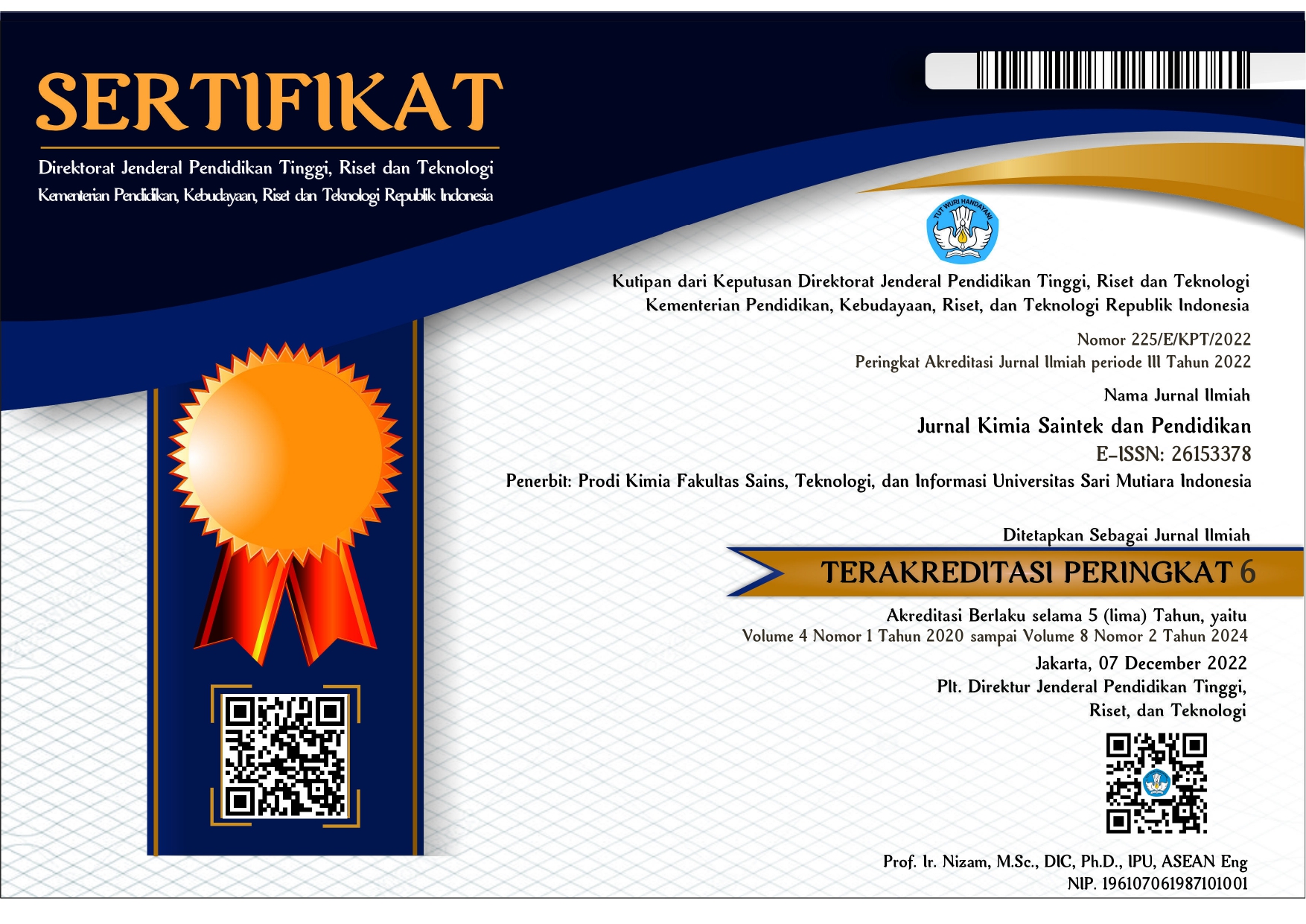PENGARUH KADAR SILIKA DARI FLY ASH BATU BARA SEBAGAI BAHAN PENGISI HIDROGEL BERBAHAN DASAR SELULOSA BAKTERI (HSB)
DOI:
https://doi.org/10.51544/kimia.v6i1.2975Keywords:
bacterial cellulose, flys ash, hydrogen, silicaAbstract
In one coal combustion process, about 80% of fly ash is produced and the rest is bottom ash, which is around 20%. The main components of coal fly ash originating from power plants are silica (SiO2), alumina (Al2O3), and iron oxide (Fe2O3), the rest are carbon, calcium, magnesium, and sulfur. Silica is one of the most dominant components of fly ash. Hydrogels obtained without fillers still have a Swelling capacity that is not maximized, it is necessary to process hydrogels with high absorption capabilities. One of the methods used to increase the absorption of hydrogels is to add silica as a voice filler. This study aims to determine the effect of 10, 20, 30, and 40% silica content from coal fly ash as a filler for bacterial cellulose-based hydrogels. Silica was obtained by extracting sodium silicate solution from fly ash followed by the manufacture of silica gel using 3N H2SO4. The resulting silica gel is added to the hydrogel manufacturing process. Hydrogel with silica as a filler which produces water absorption, FTIR, and SEM. The test results show that the silica content of 20% has the highest water absorption capacity of 1290%. With the concentration used, silica precipitation will produce a sharper silica peak in the FTIR results. SEM analysis with the addition of silica with bacterial cellulose produces pores on the HSB surface which can absorb air more quickly. The pores on the surface of the HSB affect the water absorption capacity (hydrophilicity) to increase. The addition of silica precipitated from fly ash waste as a filler in Bacterial Cellulose Hydrogel (HSB) was able to increase the Swelling capacity of HSB









 This work is licensed under a
This work is licensed under a 

.png)

